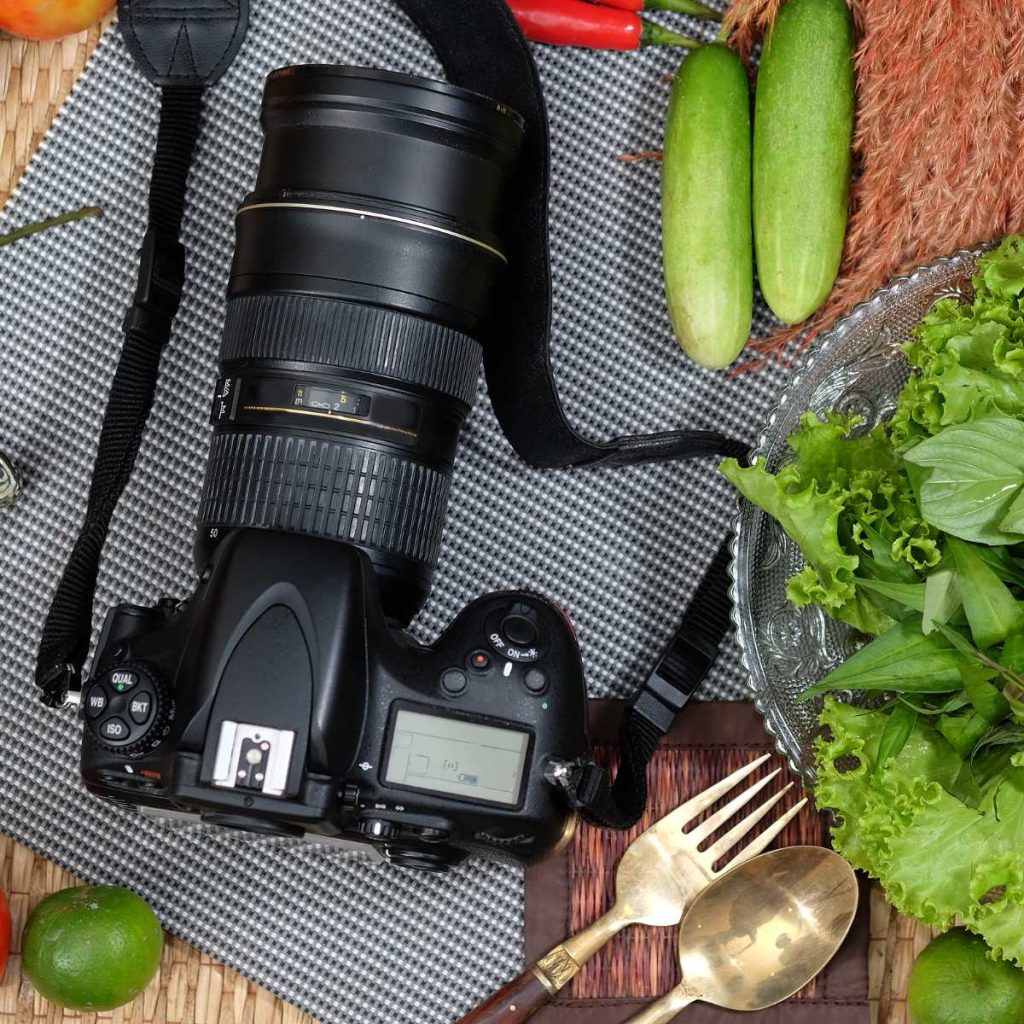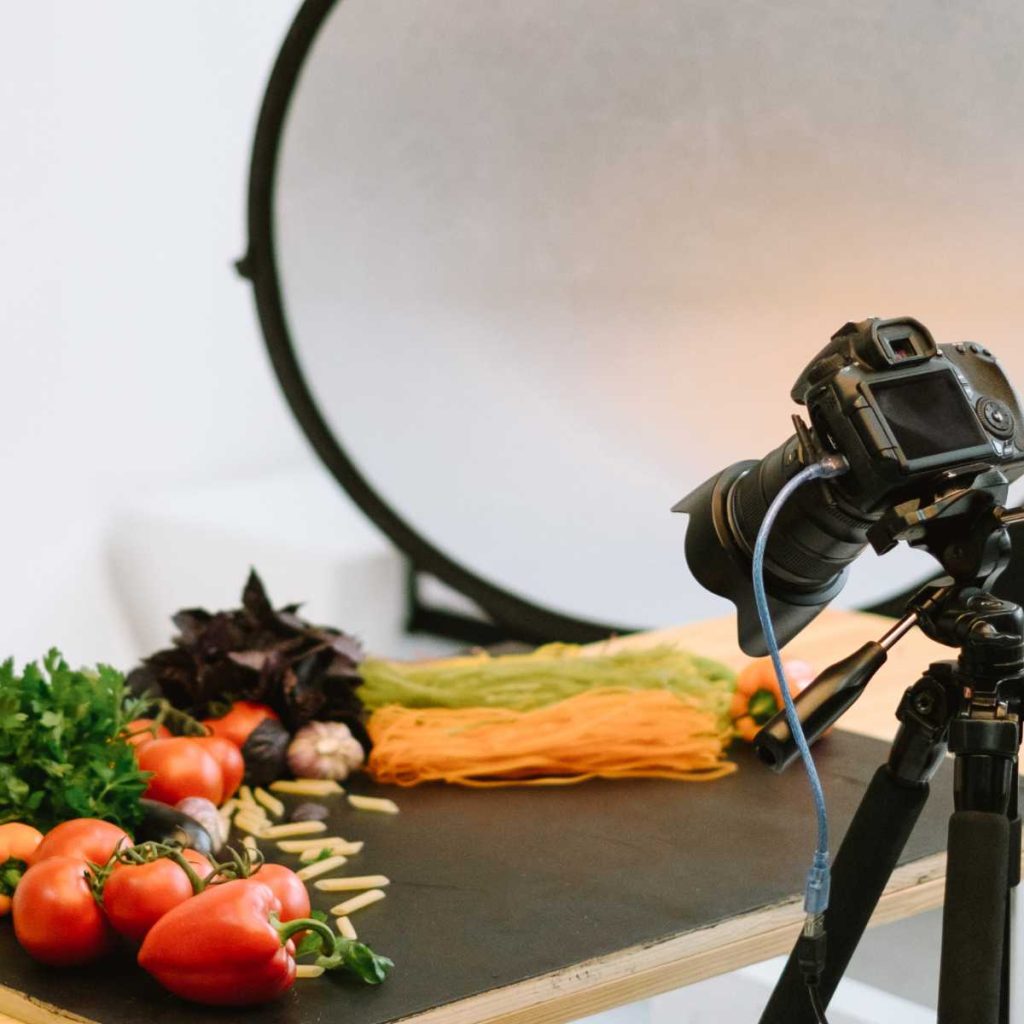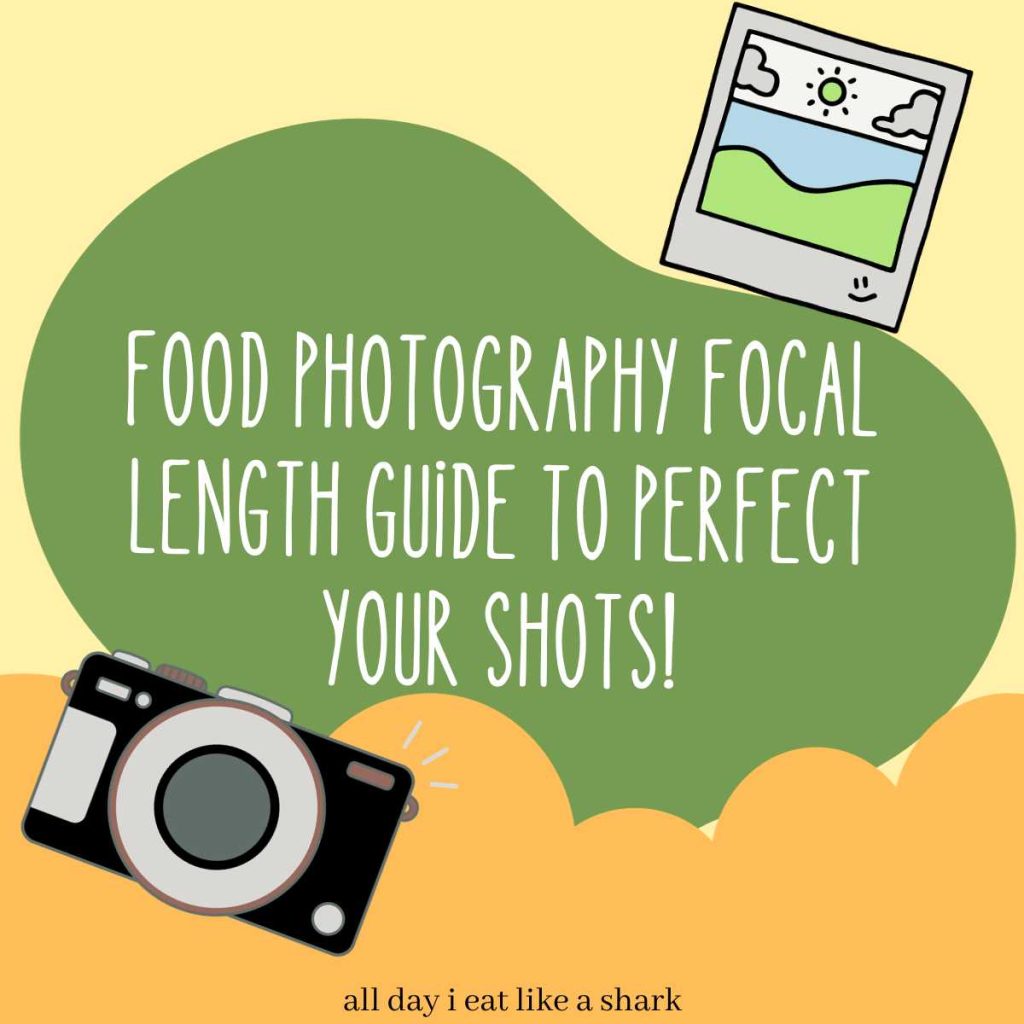Are you looking to elevate your food photography game? Uncover the essence of food photography focal length in this comprehensive guide!
Discover how to select the ideal focal length to bring out the beauty in every food close-up, making your images more alluring.
In this piece, we’ll also discuss the impact of wide-angle focal lengths on your food compositions and the dramatic effect they can have on your dishes.
Moreover, we’ll explore specialty focal lengths that can create unique and captivating food shots.
Prepare to snap tantalizing images that leave viewers hungry for more! Dive in!
The Basics of Food Photography Focal Length
You should consider using a longer focal length to capture more details in your food photography. By increasing the focal length of your lens, you can bring your subject closer without physically moving, allowing you to capture the intricate details of your food.
This is particularly important when photographing dishes with intricate textures or small ingredients, as a longer focal length will help you showcase these details in a visually appealing way.
Additionally, using a longer focal length can also create a more shallow depth of field, isolating your subject and creating a pleasing bokeh effect in the background.
Experimenting with different food photography focal lengths will give your food photography a unique and innovative edge, allowing you to capture stunning images that stand out from the crowd.
Choosing the Right Focal Length for Food Close-ups
Consider experimenting with varying focal lengths to capture the best close-up shots of your food. In the world of food photography, innovation is key to creating captivating images that make your audience drool.
By playing with different focal lengths, you can enhance the visual appeal of your dishes and bring out their finest details.
For those seeking to push the boundaries of food photography, consider using a wide-angle lens to capture the entire scene and create a sense of depth. Alternatively, a macro lens can help you focus on intricate textures and tiny details, allowing your viewers to appreciate the artistry in every bite.
Don’t be afraid to break away from the norm and try something new. Embrace innovation and let your creativity shine through your lens.

Exploring the Effects of Wide-Angle Focal Lengths on Food Composition
Capture the entire scene and enhance the depth of your food compositions by experimenting with wide-angle focal lengths.
Step out of your comfort zone and explore the innovative possibilities that wide-angle lenses offer in food photography.
By using a wider focal length, you can showcase not only the main dish but also the surrounding elements that add context and visual interest to your composition.
Experiment with different angles and perspectives to create a unique narrative in your photographs.
With wide-angle focal lengths, you can create a sense of immersion and bring your viewers into the scene, making them feel like they’re right there, ready to indulge in the delicious meal you have captured.
Telephoto Lenses: Enhancing Depth and Detail in Food Photography
To enhance the depth and detail of your food compositions, try using telephoto lenses, which can bring out the intricate textures and layers in your dishes. These innovative lenses allow you to capture food in a way that truly showcases its beauty.
By utilizing a telephoto lens, you can zoom in on the smallest details, capturing the delicate flakiness of a pastry or the vibrant colors of a salad.
The longer focal length of a telephoto lens also helps to create a shallow depth of field, allowing you to isolate the subject and blur the background, resulting in a visually stunning image.
Whether you’re a professional food photographer or just a passionate foodie, telephoto lenses provide a fresh perspective and a level of detail that elevates your food photography to new heights.

Creative Perspectives: Using Specialty Focal Lengths to Capture Unique Food Shots
You can achieve even more unique food shots by experimenting with different specialty focal lengths and combining them with creative perspectives.
By using specialty focal lengths, such as wide-angle lenses or macro lenses, you can capture food in a way that highlights its texture, color, and intricate details.
For example, using a wide-angle lens can create a sense of depth and scale, allowing you to showcase the entire food spread or capture the environment in which the dish is being served.
On the other hand, a macro lens can bring out the smallest details, like the texture of a creamy dessert or the intricate layers of a cake.
By combining these specialty focal lengths with creative perspectives, such as shooting from above or at a low angle, you can add a unique and dynamic element to your food photography.




Konnichiwa! (Hello!) I'm Pat Tokuyama, a Japanese tofu cookbook author, who travels for music, food, and adventure. If you like Japanese tea, checkout some of the newestorganic japanese tea, matcha bowls and noren and more!
** Curious about the Plant Based Japanese Cooking Club? ** Learn more here!